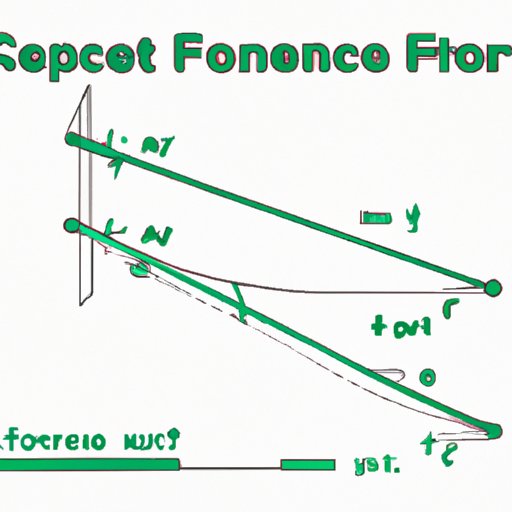
Introduction
Have you ever wondered how to calculate net force? Understanding net force is crucial in the world of physics and is necessary for solving a variety of force problems. In this article, we will walk you through the different types of forces, step-by-step solutions for solving net force problems, and provide tips and tricks for mastering net force calculations. By the end of this guide, you will have the confidence and ability to solve any net force problem that comes your way.
The Beginner’s Guide to Understanding Net Force: Step-by-Step Calculation Tips
In physics, net force is the sum of all forces acting on an object. It is important to understand net force because it determines the motion of the object. If the net force is zero, the object will remain at rest or continue to move with a constant velocity. However, if the net force is nonzero, the object will experience acceleration.
Forces are simply pushes or pulls that act on an object. They can be divided into two main categories: contact forces and non-contact forces. Contact forces include frictional forces and normal forces, while non-contact forces include gravitational forces and electromagnetic forces.
When calculating net force, it is best to follow a step-by-step process. First, you need to identify all the forces acting on an object. Then, you need to determine the direction and strength of each force. Finally, you can use the formula Fnet = ΣF to calculate the net force.
Mastering Physics: How to Easily Calculate Net Force in 4 Simple Steps
The formula for net force is Fnet = ma, where Fnet is the net force, m is the mass of the object, and a is the acceleration of the object. To calculate net force using this formula, follow these four steps:
- Identify all the forces acting on the object and their directions.
- Determine the net force acting in each direction (horizontally and vertically).
- Add up the net force in each direction to determine the total net force.
- Calculate the acceleration of the object using the formula a = Fnet / m.
For example, consider a 5kg object with a horizontal net force of 10N to the right and a vertical net force of 20N upwards. The net force can be calculated as follows:
- Net force in the horizontal direction = 10N
- Net force in the vertical direction = 20N
- Total net force = √(10² + 20²) ≈ 22.36N
- Acceleration = Fnet / m = 22.36N / 5kg = 4.47 m/s²
Net Force Demystified: A Comprehensive Guide to Solving Force Problems
One common mistake people make when solving force problems is forgetting to factor in all the forces acting on an object. It is important to identify all the forces so you can accurately calculate the net force.
Additionally, it is important to know how to distinguish between the different types of forces. For example, gravitational forces always act downwards while normal forces act perpendicular to the surface of an object. Frictional forces can act in either direction and are dependent on the type of surface and the force pressing the objects together.
To solve more complex force problems, it may be helpful to break down the forces into components or use free body diagrams. A free body diagram is a diagram that isolates an object and shows all the forces acting on it. By doing so, you can easily see how each force contributes to the net force and determine the direction of acceleration.
Physics Made Easy: Quick and Accurate Net Force Calculation Methods
There are alternative methods for calculating net force that may be more efficient for certain problems. For example, breaking forces down into components can make it easier to determine the net force in each direction. Additionally, using free body diagrams can provide a visual representation of the forces acting on an object and help you determine the direction of acceleration.
However, it is important to weigh the pros and cons of each method and determine which one is most suitable for the problem at hand. Sometimes, the formula Fnet = ma may be the most straightforward and efficient way to calculate the net force.
Solving Net Force Problems with Confidence: Tips and Tricks for Success
When solving net force problems, it is important to stay organized and keep track of the units. Make sure all the forces and accelerations are in the correct units and use parentheses to avoid any errors in calculation.
Additionally, always double-check your work and make sure your answer makes sense. If an object is not moving, the net force should be zero. If an object is moving, the net force should be nonzero and in the same direction as the acceleration.
Finally, don’t be afraid to practice and seek help if needed. The more you practice, the more confident you will become in solving net force problems. And if you are still struggling, don’t hesitate to ask your teacher or a tutor for assistance.
Conclusion
Calculating net force is an essential part of physics and mastering it is crucial for solving a variety of force problems. By understanding the different types of forces, following step-by-step calculation tips, and using alternative methods for solving net force problems, you can become confident in your ability to solve any net force problem. Remember to stay organized, be mindful of units, and double-check your work. With practice and perseverance, you too can become a net force expert.




